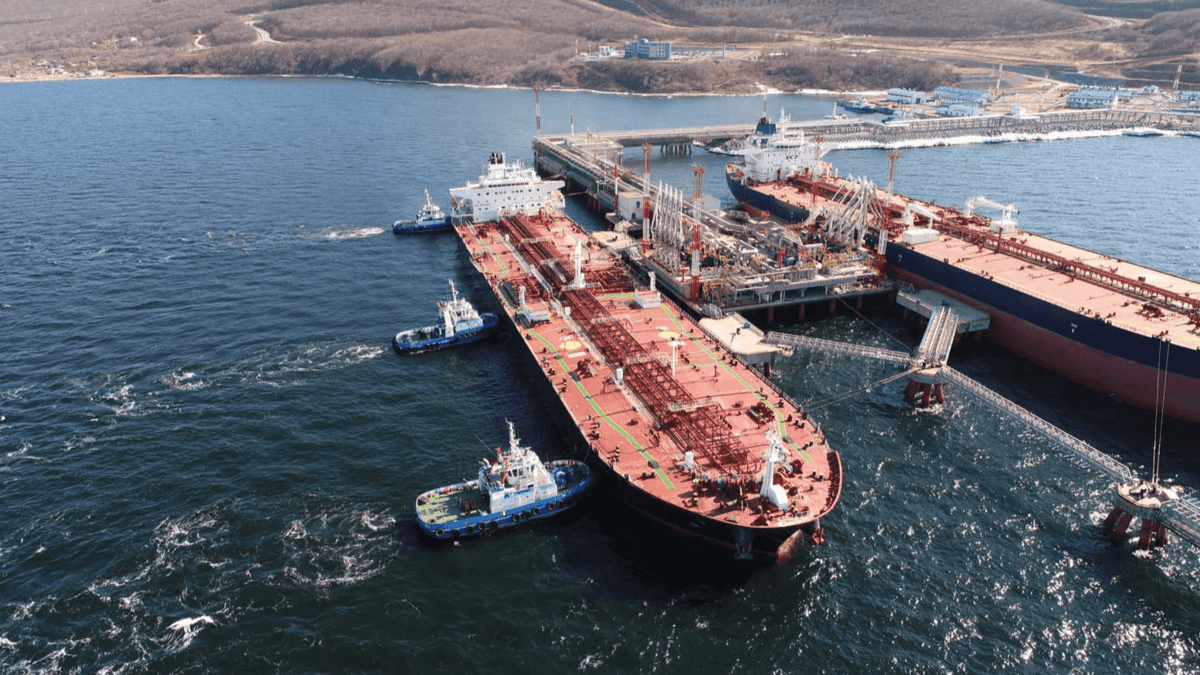Trade and geopolitics
Crude awakening: Russian oil fuels bifurcation
Published 11 June 2024
For all the talk in the West about building resilient supply chains, the one supply chain that has proven resolute is Russian oil. The plan was to embargo Russian oil exports, crippling one of its biggest sources of hard currency. Visual Capitalist shows how it hasn’t quite turned out that way.
[Transcript by Chuin Wei Yap]
Russian oil is seemingly everywhere these days. Last week, Ghana took 1 million barrels of Lukoil crude to be processed by a new refinery there built by Chinese investors. China, Brazil, Turkey, Brunei, and Pakistan are among others snapping up shipments. India has not only continued to buy Russian oil – it became the largest importer since the West sanctioned Russia’s invasion of Ukraine – New Delhi will now pay for it in roubles to help Moscow circumvent the Western financial system.
The Group of Seven used to be the biggest buyers of Russian oil. In retaliation for the Ukraine war, the allies imposed a price cap on companies in G7 nations, from shippers to insurers, from dealing in Russian oil priced above US$60. The cap, designed to avert a global price shock, accompanied a slew of other sanctions including asset seizures and freezing of Russia’s access to Western global financial payment networks.
What happened instead was that Russia’s supply chain simply morphed around the new political geography.
As a new graphic from Visual Capitalist and the Hinrich Foundation shows, China and India now head a column of middle and smaller powers that are more than happy to step into the Western void.
Download Crude awakening: Russian oil fuels bifurcation by Visual Capitalist:

The Future of Trade Infographic Series
The new order has built a fleet of "ghost tankers", estimated to number more than 400, to fuel the trade. On the books, the price might say the crude shipments were US$59 a barrel. In reality, Chinese purchases were already breaching US$70 as far back as a year ago, Hinrich Foundation research showed.
The outlook on Russian exports is so robust that the International Monetary Fund in April upgraded Russia’s economic growth for 2024 to 3.2%, citing steady oil export volumes. The transcript of the IMF conference announcing its upward revision had this priceless exchange:
Question: Good morning. Anton with TASS Agency of Russia. Thank you so much for doing this. The same question. The growth rate of the Russian economy is high into 2024… In this case, can we say that Russia was able to successfully overcome the sanctions restrictions? Thank you so much.
IMF spokesman Jose Luis De Haro: Yes.
Global trade isn’t shrinking. It’s simply changing the way it moves around the world. As Visual Capitalist and the Hinrich Foundation have shown in earlier instalments of this visual series, the story is unfolding in geoeconomic blocs and currency moves.
Trade relationships increasingly reflect the realignment, Visual Capitalist research showed. Russia’s dependence on China has risen 7% between 2022 and 2023. Brazil’s is up 3%. US trade dependence on China has fallen by 1.2%; Ukraine’s on the European Union is up 6%.
In a geopolitical landscape of rising bifurcation, Russian trade is merely the most telling aspect of a world increasingly coming apart.
© The Hinrich Foundation. See our website Terms and conditions for our copyright and reprint policy. All statements of fact and the views, conclusions and recommendations expressed in this publication are the sole responsibility of the author(s).
Author






